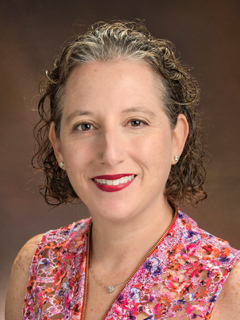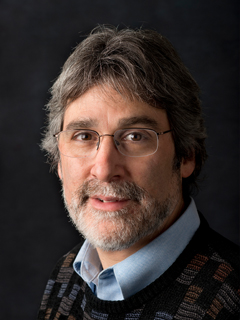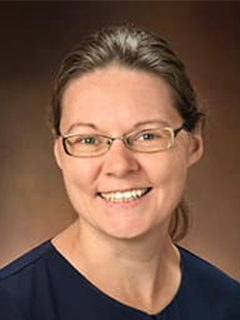HOW CAN WE HELP YOU? Call 1-800-TRY-CHOP
In This Section
CureARS, Pigment Production, TBCK

One of Children's Hospital of Philadelphia Research Institute's great strengths is its focus on rare diseases, many of which can leave families confused and seeking clarity about their children's diagnosis. In this week's roundup of research news, we highlight some of the incredible initiatives and insights our scientists have made in such conditions. Read about the Mitochondrial Medicine Center's research into ARS2 disorders, a weekend at CHOP dedicated to families of individuals with TBCK Syndrome, and new insights into the molecular mechanisms behind pigment production.
Mitochondrial Medicine Center Collaborates With CureARS Through New Grant

Marni Falk, MD
The Mitochondrial Medicine Frontier Program at CHOP launched a new research grant program with the nonprofit CureARS that will establish a suite of models for mitochondrial-targeted ARS2-genes that impair mitochondrial translation and result in multisystem problems for individuals with mutations of these genes. As part of the research, Marni Falk, MD, and her team will evaluate potential therapies in the models through high-throughput screening to better understand how to treat this rare class of disease. CureARS presented Dr. Falk's team with a three-year research grant at a celebratory launch Sept. 20.
"We are very excited to have this opportunity to partner with the CureARS Foundation to take a global approach to understanding all of the ARS2 disorder…" said Dr. Falk in a CureARS news item. "New therapies are sorely needed that we hope to identify through this translational research program in an effort to improve the health of all individuals living with the ARS2 class of mitochondrial disease."
The families of Daphne Magee and Aubrie Rowland, both young girls affected by the ARS gene family, began CureARS with the goal of funding projects whose objective is to provide a longer and better quality of life for ARS patients. While there are many barriers to finding treatments for these debilitating diseases, including lack of patients to adequately study each gene, CHOP's Mitochondrial Medicine Frontier Program has extensive expertise in characterizing how mitochondrial disease affects the body; developing improved diagnostic genetic, biochemical, tissue, and imaging testing; and paving the way for precision therapies.
CHOP Researchers Reveal Molecular Mechanism Behind Pigment Production in Skin Cells

Michael Marks, PhD
A new study published in the Journal of Cell Biology tells us a little more about how melanosomes, the organelles where pigments are produced, form and what a set of genes related to Hermansky–Pudlak syndromes (HPS) might have to do with the process. HPS are a group of inherited multisystem disorders of which albinism, a condition characterized by an absence of pigment in the skin, hair and eyes, is a symptom. Previously, researchers found that individuals with HPS have abnormalities in the formation of cell type-specific lysosome-related organelles such as melanosomes.
To further elucidate the molecular mechanisms behind how pigments are produced in skin cells,
Michael Marks, PhD, professor of Pathology and Lab Medicine at CHOP, and his team focused on BLOC-1, a protein complex required for the biogenesis and maturation of melanosomes. Specifically, BLOC-1 is required to develop intracellular membrane tubes that allow melanin synthetic enzymes to be delivered to melanosomes. Four of BLOC-1's subunits are mutated in forms of HPS. The researchers identified two enzymes required for BLOC-1-dependent tube formation and thus influence the process of transporting melanin synthetic enzymes into melanosomes to generate pigment.
"This study showed us the 'what' — that two kinases are essential in melanosome biogenesis, and that these kinases localize sequentially," said Dr. Marks, the study's senior author, in a news brief. "The next step of this research will be figuring out how and why these enzymes are targeted to two different sites, which could help us better understand dysfunction of other lysosome-related organelles that are relevant in HPS. This work also gives us a tool to help us better understand the three-dimensional structure of BLOC-1, which could lead to a greater understanding of these mechanisms."
TBCK Conference Brings Families From Around the Globe to Philadelphia

Xilma Ortiz-Gonzalez, MD, PhD
In partnership with the TBCK Foundation, CHOP hosted the 2nd biennial TBCK Weekend Conference and Family Gathering Oct. 7to Oct. 9 in an event packed with connection and learning. TBCK-related encephalopathy is a rare neurogenetic disorder with only about 35 cases worldwide, making such gatherings an important and valuable event for families of individuals with the syndrome. TBCK, which manifests in individuals with mutations in the TBC1 domain-containing kinase (TBCK) gene, is characterized by hypotonia, developmental delay, and intellectual disability.
At the event, attendees learned about insights and updates from researchers at CHOP and listened to presentations from Gerald Downes, PhD, and Madison Riffe, of the University of Massachusetts Amherst's Downes Laboratory. Families had the opportunity to connect with each other by sharing their stories and experiences. The agenda included tours of CHOP's research labs, a TBCK Warrior Fashion Show at the Sheraton Hotel, and a full-day conference featuring the world's top TBCK Syndrome researchers and clinicians, and a parent panel.

Elizabeth Bhoj, MD, PhD
CHOP is a fitting location for the event, as physicians Xilma Ortiz-Gonzalez, MD, PhD, and Elizabeth Bhoj, MD, PhD, are among the co-discoverers of the syndrome and have been collaborating with the common goal of advancing the understanding and treatment for the progressive disease. Drs. Ortiz-Gonzalez and Bhoj and their teams are actively engaged in natural history and phenotypic variability studies of TBCK.
"The TBCK Foundation is grateful to the efforts and support of our dedicated TBCK Research team at both CHOP and UMass Amherst, which helped give insights into the research underway for better understanding TBCK syndrome," said Nikki Stusick, co-founder of the TBCK Foundation and a TBCK advocate. "We selected Philly as our location this year so that families would have access to the TBCK researchers. Many of our families in attendance were meeting other TBCK families for the first time, which is always a powerful moment for families who otherwise are unlikely to meet another family with such a rare diagnosis."
ICYMI
Catch up on our headlines from our Sept. 30 In the News:
- Food Allergy Bravery Clinic: Helping Children With Food Allergies Overcome Anxiety
- Telemedicine Becomes Standard Component of Child Neurology Care for Many Patients
- Parkway Run & Walk Raises More Than $2M for Pediatric Cancer Research
- CHOP Receives Joint NIH Grant to Study Antifungal Therapy
- Dr. Alexis Thompson Discusses Early Successes of Gene Therapy for Sickle Cell Disease
Keep up with our news, stories, and updates in real time by following us on Twitter, Facebook, LinkedIn, or Instagram. Meet the minds behind the science in the Bench to Bedside podcast. Or subscribe to our biweekly newsletter, Research Insider, by signing up here.


